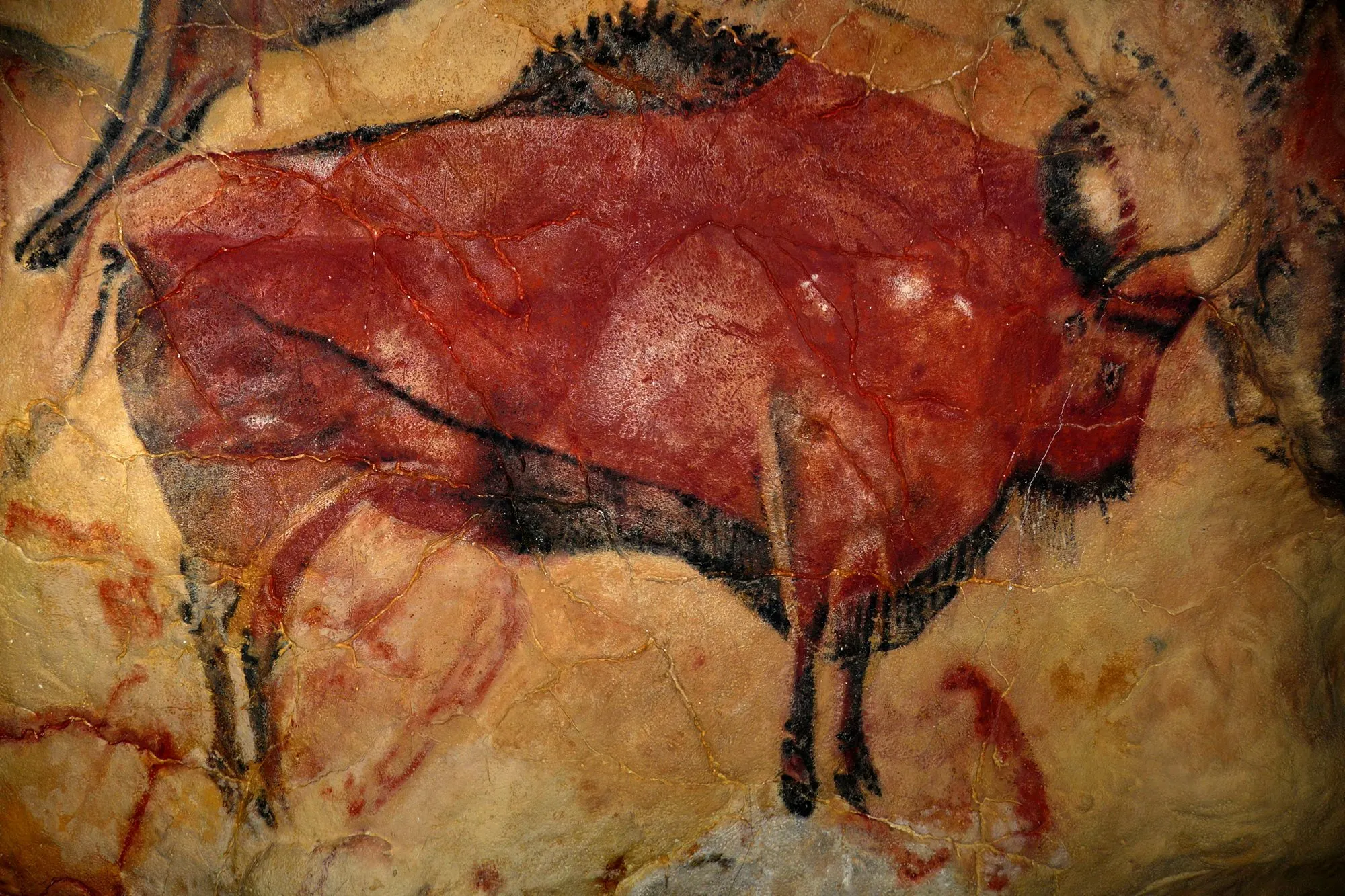
Cookie settings
We use our own and third-party cookies in order to offer our services, display videos, obtain statistics and offer personalized advertising.
For more information, please read our cookies policy.

The cave is longitudinal and has 270 m approximately. It comes from the Magdalenian and Solutrean periods, within the Upper Palaeolithic. It consists of a hall that is illuminated with natural light, where we can find stone and bone tools; the room of paintings, popularly known as “Capilla Sixtina deL Cuaternario” (Sixtine Chapel of the Quaternary period) and finally minor rooms with less important artistic signs. For example, the narrowest and lowest area of the cave, like a corridor, is known as “la cola” (the tail). Here we can find a series of black signs that look like wooden ceilings and hunting traps.
On the whole, it consists of 70 engravings made on stone and approximately 100 painted figures. The buffalo appears as the most representative animal and it is represented in different sizes and positions, together with horses, hinds, wild boars, bulls, signs or human figures, made of ochre, red, yellow and brown mineral pigments mixed with binding substances such as animal fat and sketched in black that come from the charcoal. We should highlight the vivacity of colours.
The artist used natural projections of the stone in order to create a feeling of relief and movement. This feeling of realism is what identifies the French- Cantabrian School: an effect that belongs to the natural bulkiness of the stone.
As well as the bison that contracts its legs in order to be adapted to the stone, we should highlight a 2.25 m length hind, several hands and eight anthropomorph engravings.
Regarding the symbolism of these paintings, we could say that these representations could have a religious meaning because they allude to the fertility, hunting or battle between clans rites.
Address and telephone
Opening times
Prices
General: 3 €
Reduced: 1,5 €
Other prices: season ticket, discounted tickets and free entrance (proof needed)
If you see any mistakes or want to add anything to this information, please contact us.

Book your hotel